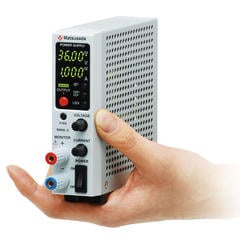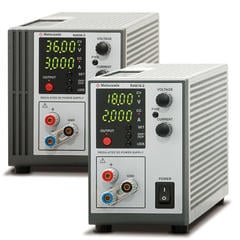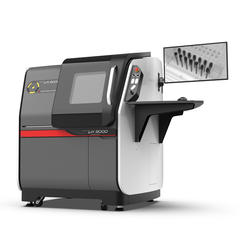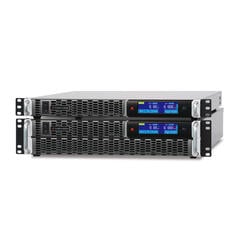Soldering is a fundamental process in the manufacturing of reliable, high-performance power supplies. This article explores the core principles of soldering, from the materials involved to best practices for achieving optimal results.
Matsusada Precision offers a wide variety of power supply units, such as DC power supplies (programmable DC power supplies), high-voltage power supplies, and AC power supplies. Please inquire if you have any questions.
Click here to search our products.
What is Solder?
Solder is a fusible metal alloy used to create a permanent bond between metal workpieces, ensuring both electrical conductivity and mechanical strength. A soldering iron is used to heat the metal (base material) of the part to be soldered. The solder is then melted onto the metal (due to wetting and capillary action) to create an alloy of the metal and solder at the connection surface.
What are components of solder?
There are many kinds of solder according to the applications and the ingredients.
Lead-containing solder (eutectic solder) was commonly used. However, lead-free solder (Sn97C) has become general due to environmental consciousness rising.
The most well-used lead-free solder is SnAgCu (Sn97C) type, composed of 96.5% tin (Sn), 3% silver (Ag), and 0.5% copper (Cu).
The melting point of lead-containing solder is approximately 183 degrees. On the other hand, it is higher, from 217 to 219 degrees, in lead-free solder.
Wire solder is popular for soldering. It has a structure whose outside is covered with solder alloy and flux in the center.
What is Flux?
The flux used in wire solder is made by adding chemicals to natural plant resin (such as pine tar). Flux is an important item in soldering work. Flux plays three critical roles in the soldering process:
- It melts before the solder (at about 90°C), and removes any oxides and dirt that are on the surface of the metal (base material) and molten solder.
- It reduces the surface tension (stickiness) and improves the wetting of the solder.
- It covers the surface of molten solder to prevent reoxidation.
What is Base Material?
Base material is the metal that is soldered.
Condition of the surface of the base material
The surface of the base material is covered with many obstacles to soldering. A metal surface that looks clean at first glance is actually covered with a lot of fine dust and dirt, as well as a surprisingly large amount of fats and oils. In addition, if the base material is left exposed to the air, it combines with oxygen to form an oxide film.
Shape of the base material
Since the shape of the base material greatly affects solderability and bonding reliability, the following conditions must be satisfied.
- The base material must be mechanically and securely fixed. Otherwise, it could move, resulting in cold solder joints.
- The base material must have appropriate clearance.
- The temperature of the entire joint area must rise the same amount at the same time.
- The structure of the base material must prevent the solder from flowing to unnecessary locations.
- The structure of the base material must prevent the flux from splattering to dangerous locations.
- Parts that are sensitive to heat must be protected.
- There must be no stress applied to joint areas.
Key Points for Good Soldering
- The solder should have a natural glossy shine.
- There should be clearly visible lines.
- There should be correctly shaped fillets.
- Contact angle θ should be small.
- There should be no cracks or pinholes.

Examples of Poor Soldering
1. Too much flux
Symptom
- There is a film of flux that comes off when pulled.
Countermeasures
- Increase the temperature of the base material to a sufficient level.
- Occurs easily when the surface of the base material is dirty.
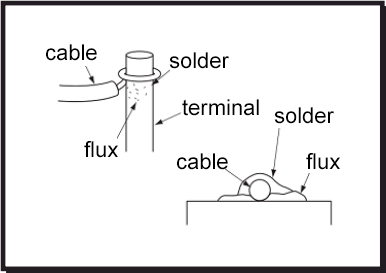
2. Tunnel solder
Symptom
- There is an interior gap and only partial bonding.
Countermeasure
- Do not allow any movement until the solder has solidified.
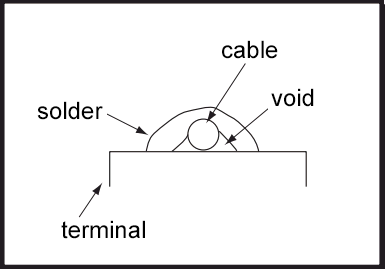
3. Cold solder joint (Solder blob, Solder balling)
Symptom
- The surface of the solder is rough with no glossy shine.
Countermeasures
- Lower the temperature of the tip of the soldering iron.
- Do not try to fix it with only the soldering iron without first removing the old solder.
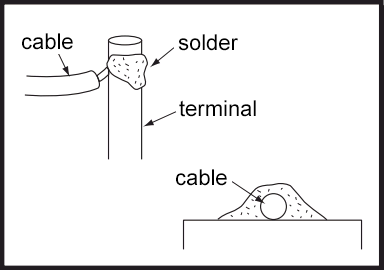
4. Excess solder
Symptoms
- No clearly visible line.
- Solder is flowing to unnecessary locations.
Countermeasure
- Reduce the amount of solder supplied.
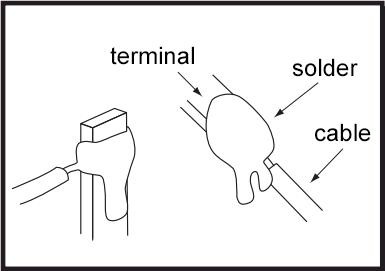
5. Solder projection
Symptom
- There is a projection.
Countermeasure
- Pull the soldering iron away quickly and sooner after heating.
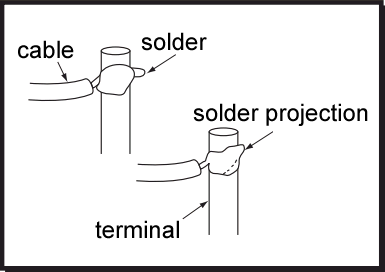
6. Burned covering, projections
Symptom
- The wire has been melted.
Countermeasure
- Handle the soldering iron with more care.
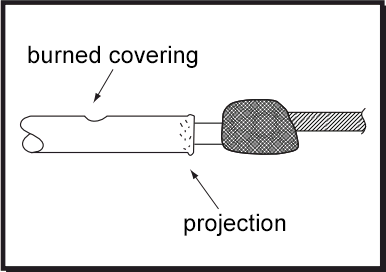
7. Insufficient solder
Symptom
- Insufficient wetting.
Countermeasure
- Increase the amount of solder supplied.
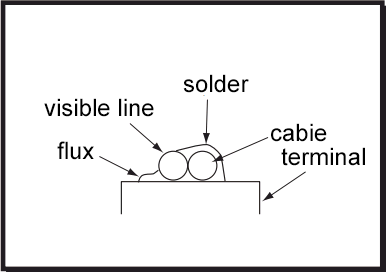
8. Bridge
Symptom
- A short circuit is caused by soldering.
Countermeasure
- Do not make the post-heating process too long, and carefully consider which direction to pull the soldering iron.
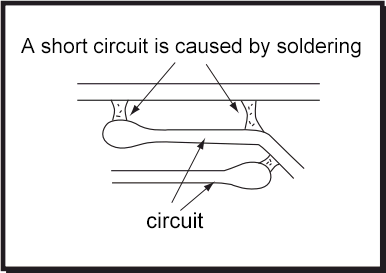
Achieving Excellence in Manufacturing
At Matsusada Precision, the principles of soldering are not just theoretical knowledge; they are the foundation of our manufacturing process. By meticulously controlling every solder joint, we ensure the exceptional quality, reliability, and long-term performance of our high voltage power supplies, DC power supplies, and high voltage amplifiers. This commitment to excellence is what allows us to deliver the sophisticated and dependable products our customers expect.
Click here for more information about Matsusada Precision products.



